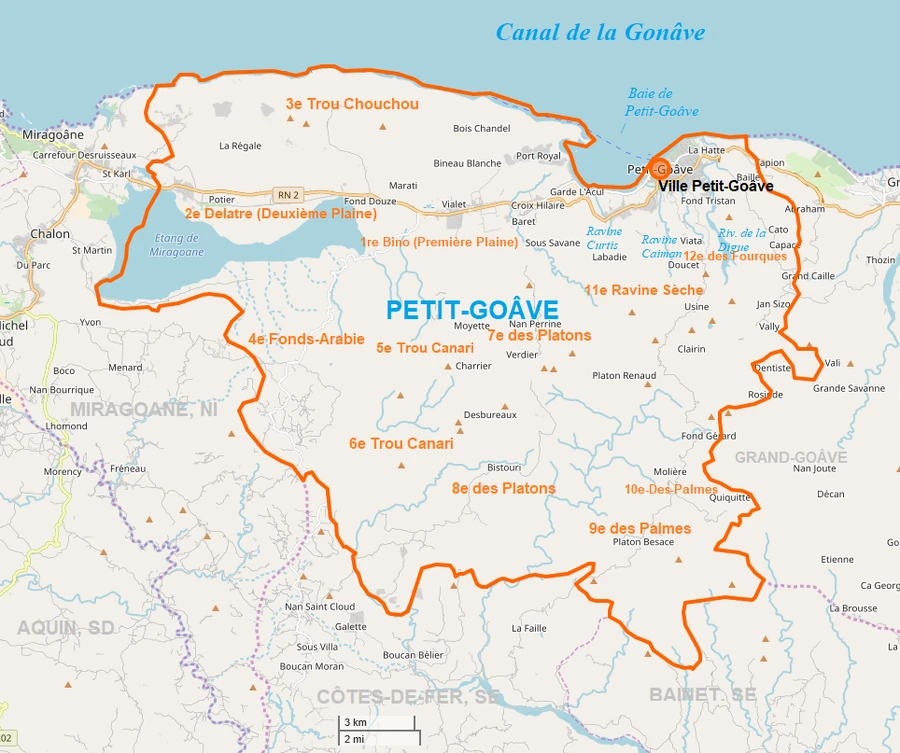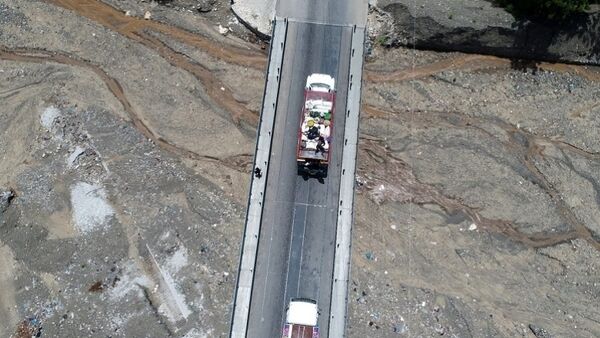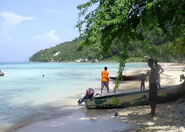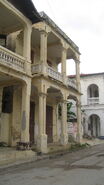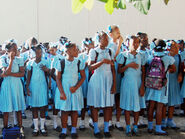Petit-Goâve (Kreyol: Ti Gwav), one of the first cities to be established in Haiti, is a commune in its Western Department. Petit-Goave is the second most populous city in the Léogâne Arrondissement and the 13th most populous city in Haiti. It was inhabited by the Amerindians, who named it Goâve. It became Aguava when the Spanish colonists settled it. Eventually the French acquired and divided it, re-naming it Grand-Goâve and Petit-Goâve. Petit-Goâve served as the temporary capital of the prosperous colony of Saint-Domingue. The city is situated at the mouth of the Rivière de la Digue at the head of the Petit-Goâve Bay.
Petit-Goave was one of the wealthiest cities in the country, thanks to its position on the Windward Passage and the importation of slaves. Today, the city of Petit-Goâve is home to a hospital, three high schools, 5 volleyball, and 3 football (soccer) clubs (2008) which have shifted the city's economy into service industries, though it still retains some agricultural activity. The commune of Petit Goâve has already produced a president who would later be named King Faustin Soulouque, using the title Faustin the 1st. The city was once nicknamed the "Ti Goâve"; it began rebranding itself as a "Creative Capital" to emphasize its educational resources and arts community.

Petit-Goâve's Grand Street
Click here to visit Petit-Goâve's Facebook page.
"Never doubt that a small group of thoughtful, committed citizens can change the world; indeed, it's the only thing that ever has."
Pa janm gen dout ke yon ti gwoup nan sitwayen reflechi, pran angajman ka chanje mond lan; tout bon, se sèl bagay ki janm genyen.
-Margaret Mead
History[]

Location in Haiti

Welcome sign
The city of Petit-Goâve was founded in 1625 and raised to the rank of commune in 1663. The city celebrated its 350 year landmark anniversary with a three day celebration, beginning on a Friday, throughout which many events showcasing history, Haitian society and culture were put on. A guest of honor to the ceremonies was Haitian-Canadian author, Dany Laferrière, whose honor in the French language, with his election into the French Academy, makes him one of the world's 40 authorities on the language. Since Petit-Goâve is his hometown, Laferrière felt it best to celebrate both events as one with a visit.
First residents

Petit Goâve
The population descended from immigrants from all over the world and from Haiti in the 19th and 20th centuries (1800s and 1900s). The Petit-Goâvien territorial space has sheltered and welcomed two categories of migrants: migrants of foreign origin and migrants of Haitian origin.

Kokoye Beach ••• Petit-Goâve, Haiti
The first includes Amerindians, Spaniards, French, Poles, and African slaves. In the middle of the 19th century, it welcomed Germans from the Simmonds coffee roasting factory (from 1883, the import-export coffee houses), Arabs from Bethlehem and Palestinians at the beginning of the 20th century, and Americans from the American occupation (1915-1934). Certain surnames testify to the ancestry of the bearers and even certain habitations in the communal sections are reputed to harbor descendants of Polish and Jewish origin.

Rocks on the coastline of Petit-Goave, Haiti
The second brings together the various waves of Haitian migrants who also landed in Petit-Goâve between the 18th and 20th centuries (the 1700s to the 1900s). This includes a mixture of slaves from the colonists' plantations, the maroons of freedom, and members of the public and private administration (officers and soldiers of the army, public administration, central factories, etc.). Some have only transited there, sometimes leaving their surname to chance and according to their good faith, others have taken root there since the 19th century by legally allying themselves with the families found on the spot. They arrived on various occasions: during the Cacos/Piquets wars, during the construction of the Southern Road, during the Canadian-Haitian DRIPP project of 1976, and after the earthquake of January 2010.
At the beginning of the 20th century (1900s), Petit-Goâve's residents migrated particularly from Grand-Goâve, Bainet and Côtes-de-Fer. From the 1980s on, some families from Gonâve made Petit-Goâve their base. Earthquake
Petit-Goâve had its configuration re-aligned in the aftermath of the 2010 earthquake when a strong 5.9 aftershock struck at the epicenter of which Petit-Goâve lay close to. A week later the U.S. Marines arrived in Petit- and Grand-Goâve to bring aid supplies.
Geography[]
Petit-Goave is located at 18.4311° N, 72.8545° W. According to the IHSI, this commune has a total land area of 387.88 square kilometers (149.76 square miles), of which 274.67 km² (71%) is rural, 106.52 km² (27%) is suburban, and 6.69 km² (2%) is urban. Seated in the passage of Route Nationale 2, the municipality of Petit-Goâve has twelve communal sections. It is bordered by the commune of Grand-Goâve on the east, by the Southeast Department communes of Bainet and Côtes-de-Fer on the south, and by the Nippes Department city of Miragoâne on the west. Petit-Goâve is a coastal town consisting mostly of hills and a climate that varies from hot to cool. Its inhabitants bear the name Petit-Goâvien.
At 3 km/2 (1.3 square miles), the urban section has a density equal to 35,990 residents per km/2 (95,235 residents per square mile).
Demographics
| Year | Population | change +/- |
|---|---|---|
| 1896 | 25,000 | |
| 1950 | 84,788 | |
| 1998 | 124,855 | |
| 2009 | 157,296 | |
| 2015 | 172,965 |

Petit-Goâve
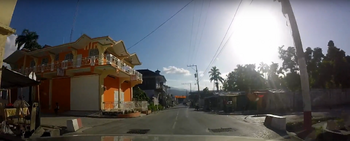
Ville de Petit-Goâve residential section
Neighborhoods
| PGV | Petit-Goâve | 172,965 | Localities | ||
|---|---|---|---|---|---|
| VPG | Ville de Petit-Goâve | Urban | 123,805 | ||
| BIN | 1ère Section Bino (Première Plaine) | Rural Section | 3,168 | Baret, Bineau Blanche, Bineau Noire, Carrefour Marose, Crabe, Croix Hilaire, Dambrois, Durèze, Garde l'Acul, Jacot, Marati, Nan Bouzin, Picore, Port-Royal, Ravine Paques, Vialet, Vieux Raque | |
| DLT | 2ème Section Delatre (Deuxième Plaine) | Rural | 3,175 | Arnoux, Bazile, Bouguillon, Coma, Fond Douze, Grande Savanne, La Régale, Olivier, Potier, Quiperie, Sapotille, Source, Source Pineau.
(the pond of Miragoâne is there and the pre-Columbian settlement of Arnoux) |
|
| TCC | 3ème Section Trou Chouchou | Rural | 1,593 | Bacardère d'Lom, Balanier, Bois Chandel, Corail, Malanga, Monery, Nan Plaine, Soubier, Soula, Trou Chouchou. | |
| FAB | 4ème Section Fond-Arabie | Rural | 1,441 | (including major historical districts of Lebrun, Poulard, and Hyacinthe) | |
| TCA | 5éme Section Trou Canari | Rural | 520 | Aliome, Charrier, Moyette, Nan Troupeau. | |
| TCN | 6éme Section Trou Canari | Rural | 2,058 | Blaise, Ca Bordes, Ca Martin, Trou Canari. | |
| PLA | 7éme Section des Platons | Rural | 688 | Belair, Nan Perrine, Nan Zetrenne, Savanette, Verdier. | |
| PLT | 8ème Section des Platons | Rural | 3,988 | Bellevue, Bistouri, Chavannes, Delatre, Desoureaux, Desravines, Du Ponton, Fond Nicolas, Gabriel, Joublette, Lasource, Lefort, Lissade, Lompré, Nan Palisir, Nan Ramier, Parade, Vialet, Zabot. | |
| PAL | 9ème Section des Palmes | Rural | 1,687 | Besace, Fond Palmes, Laferranday, La Rifi, Molière, Nan Coton, Palmes, Platon Basace. | |
| RAM | 10ème Section des Palmes | Rural | 1,042 | Fond Gerad, Potier, Quiquitte. | |
| RVS | 11ème Section Ravine-Sèche | Rural section | 2,546 | Areau, Briand, Curtis, Depaluce, Doucet, Fond Tristan, Labadie, La Brière, Massia, Petite-Guinée, Platon Renaud, Renaud, Sous Savane, Viala. | |
| FRQ | 12éme Section des Fourques | Rural section | 1,993 | Baille, Calumette, Capaca, Cato, Charlemagne, Clairin, Coulon, La Hatte, Pacot, Potier, Provence, Rosinde, Vally. |
Economy[]
At the level of Economic and Financial Infrastructures, the municipality is thinly equipped. There are two hotels, three restaurants and a bank.
Infrastructure[]
Transportation
New port[]

Port of Petit-Goâve
On Wednesday, October 21, 2015, President Martelly inaugurated the port of Petit-Goâve in the presence of both the Director General of Customs (AGD) and the Director General of the National Port Authority (APN). The construction of the port in an area covering 52 square meters took ten months to complete with a State fundings of $2.3 million.
The new port has been renovated with new customs offices and bonded warehouses built in accordance with the ISPS Code (International Code Ship and Port Security). It has the capacity to receive 2,000-ton boats along a long coastline of 1,500 meters. The construction work was a part of the area development work for enhancing competitiveness and overall development of Haiti.
Education

The Ministry of National Education of Youth and Sports is represented in the Municipality of Petit-Goâve by a school inspection office. Six kindergarten, some mostly private primary schools and twelve secondary schools have been inventoried in the commune. 3 Lycees.
The Ministry of Public Health and Population is represented in the Municipality of Petit-Goâve by a Communal Office. One hospital, six dispensaries, a health center with bed, and seven clinics were registered in the commune with a team of doctors (graduates and trainees), dentists , nurses, auxiliaries, certified matrons and technicians.
Health
The city has a hospital - Hôpital Notre Dame, a multispecialty hospital. In addition, there are three health clinics, three dispensaries, and a mobile health clinic.
Utilities

Petit Goâve City Hall
The community has six rivers, five springs, two ponds and a lagoon. Five traditional wells and public fountains with nine faucets were also listed. Electricity of Haiti is the institution that ensures the distribution of the current in the city of Petit-Goâve which is the only electrified zone. Thanks to an electric motor, this current is provided for 84 hours a week.

Petit Goave police station
Security
For Administrative and Judicial Infrastructures, the municipality has a Commissariat, two Courts of Peace, a Civil Court and a Public Prosecutor's Office. There is also a prison.
Culture[]
Religion
On the side of Religion, nearly 150 temples of all beliefs have been enumerated in the commune. The number of Pentecostal churches is the most numerous, thirty-six in total.
Organizations
Seven political parties have representation in the commune of Petit Goâve. In addition, thirteen Peasant Groups, one Womens' Group, four non-commercial Cooperatives, and two international organizations were counted.
Communication
In terms of communication, the municipality has a telephone office, four radio stations, a newspaper / magazine and a television station.
Leisure
As for Leisure, the commune of Petit-Goâve has a public library and a cinema room. There is no museum, nor theater. Football (soccer), volleyball, basketball and cycling are the sports practiced in the municipality. The city has 5 volleyball clubs and 3 football (soccer) clubs. In addition, there are four nightclubs, and four public places. In terms of Cultural Heritage, the town has two forts and three beaches. Every August 15, the town of Petit-Goâve celebrates its patron saint by receiving a large number of visitors.
Tourism[]

Bananier Beach; Petit-Goâve, Haiti
Recently Minister of Tourism, Stephanie Balmir Villedrouin, has uncovered natural features of Petit-Goâve that make it a potential tourist destination. She, together with a Ministry of Tourism delegation and Petit-Goâve Mayor, Sandra Jules, went on an exploratory mission. They visited underdeveloped tourist attractions with a view to develop them, to increase tourist spending there.
The government of Haiti has approved funding for three projects in Petit-Goâve along the shoreline, to make the area more desirable to tourists. The projects include renovations of public beaches Mon Repos, Cocoyer, and Banana Cocoyer.
The production of sweet macoss in Petit-Goâve[]
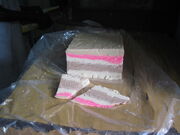
Dous Makos, a local desert
Joseph Labarre, aka Tonton Blan, is the grandson of the one who invented the recipe for sweet macoss, Madame Fernand Labarre. He co-directs a small family unit producing sweet macoss in Ti Ginen, a neighborhood on the outskirts of the city of Petit-Goâve.
Dous Makos is a sweet culinary specialty of Petit-Goâve consumed by the Haitian population. It is part of the food heritage and marks the identity of the city of Petit-Goâve, so much so that since 2008 a carnival in Petit-Goâve bears its name, The Carnival of Dous Makos. It is part of popular traditions and has developed beyond family practice to become a local product. It benefits from a strong historical anchoring. The artisanal production techniques of this confectionery have not changed since they were invented around 1930: the same ingredients are used, the same manufacturing equipment is used and the product is presented in the same conditions to the public.
References[]
"Business Information Service: 1950 Census of the Americas, Population Census" - [1]
FR-Academic - "Petit-Goave" [2]
Bulletin - Issue 91 [3]
Inventory of the intangible history of Haiti - "The production of sweet makos" - [4]
Hugues Foucault - "Knowing and understanding Petit-Goâve in the 20th century" - [5]
Michael Vedrine





